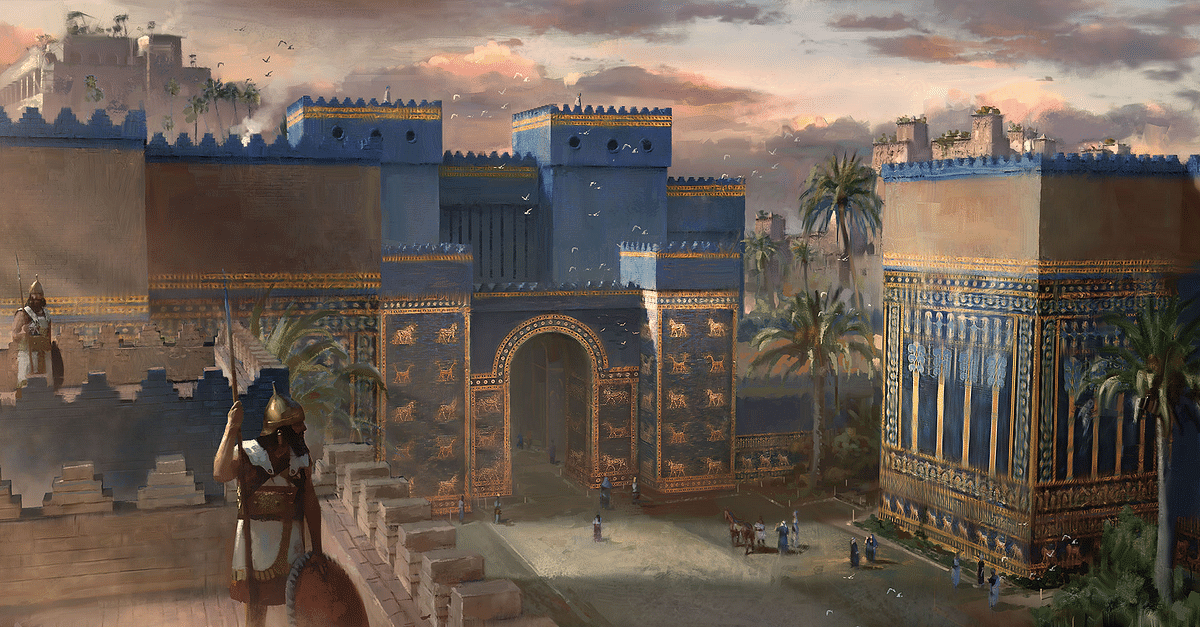Fun fact about white supremacy and how they robbed and stole, like Killmonger pointed out in his first scene in Black Panther.
That blue gate that surrounded the city at the beginning of the trailer is called The Ishtar Gate which was built in ancient Babylon (modern day Iraq) around 575 BCE.
Germans actually took large chunks of it and now it sits in a museum, IN GERMANY
Iraq appeals to Berlin for return of Babylon gate
Iraq urges Germany today to return chunks of Babylon shipped to Berlin at the beginning of the last century in a heritage seizure which makes Britain's removal of the Parthenon Marbles look tame.
When Britain took the marbles from Athens, at least it left the Acropolis behind. The German archaeologists who excavated the Babylon site had no such scruples.
An entire tower, the Ishtar Gate, was lifted and taken to a museum in Berlin, where it remains today. Standing on the tower's original site, Mohammed Aziz Selman al-Ibrahim, an archaeologist and official of the antiquities and heritage department of Iraq's ministry of culture, called for its return.
"I have anger, but what can we do?" he said. "Just, I appeal to the German government to give back our antiquities to Iraq."
Behind him, diggers and trucks were working on the excavation of another part of the Babylon site.
The Pergamon Museum in Berlin describes the Ishtar Gate on its website as "one of the major attractions" on display. A spokesman refused to comment on the Iraqi appeal yesterday.
Today a huge portrait of Saddam Hussein stands at the entrance to the Babylon site, 56 miles south of Baghdad. He has left his own mark at Babylon, building a presidential palace a few hundred metres from the site, in the same style as the original.
German archaeologists worked at the site for 20 years, until the outbreak of the first world war. They took with them many treasures, including most of the friezes, each depicting a golden lion, which lined Babylon's Procession Street. There were 120 of them, 60 on each side. The Germans took 118.
The French took a share of Babylon's treasures to the Louvre and the British helped themselves between the wars, when Iraq was a British protectorate. Mr Ibrahim said the British adventurer and writer Gertrude Bell "filled two ships with goods she stole from here". He said they remained in the British Museum.
The Hanging Gardens of Babylon were one of the seven wonders of the world. The city reached its peak during the empire of Nebuchadnezzar the Second in 604-562BC. When the Euphrates shifted nine miles to the west, the population went with it, and Babylon fell into ruin.
President Saddam's palace sits on a hill overlooking the great throne room of Nebuchadnezzar's palace.
But United Nations weapons inspectors, hunting for biological and chemical weapons between 1991 and 1998 claimed it might have another use: to hide an arsenal of banned weapons.
If the negotiations between Iraq and the UN reach a successful compromise in New York, the weapons inspectors will soon be back in Iraq, but could again come up against the problem of getting into to palaces such as this.
The presidential palace is not the only change made to the Babylon landscape. To protests from Unesco, which has responsibility for world heritage sites, President Saddam's department of antiquities and heritage decided to make up for the bareness of the site by building brick walls in 1987 on the original foundations, to provide an idea of what Babylon may have looked like.
Visitors have mixed opinions about the results, some dismissing the work carried as the "Disneyfication" of archaeology. The return of the Ishtar Gate might encourage Iraq to remove the recent work.














 #targset
#targset 


